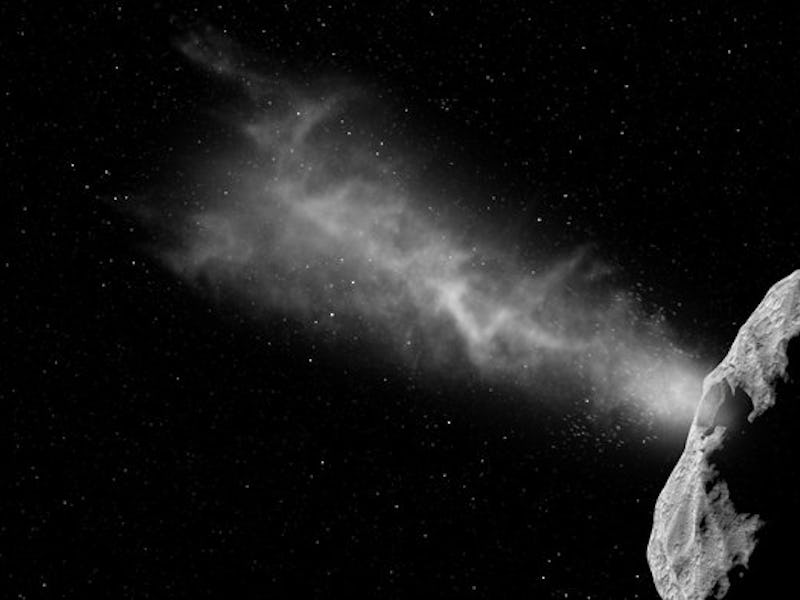Space agencies are going after an adorable asteroid moon to defend Earth
The sooner we start preparing, the better off we will be.

NASA and the European Space Agency (ESA) are gearing up for the ultimate test that will determine whether or not humanity can defend itself against future asteroid threats, but their target is an unassuming minimoon that means Earth no harm.
Didymos B, also known as Didymoon, is the smaller tag-along of a binary asteroid system known as Didymos. The asteroid is around 160 meters in diameter, and likes to spend its time orbiting around Didymos A, which measure at 780 meters, at a distance of 1.2 kilometers in a period of 12 hours.
The pair became popular on Earth when they had a close encounter with our planet on May 25, and were deemed a potentially hazardous asteroid despite maintaining a safe distance of about 3.2 million miles away from Earth.
Didymos’ distance from Earth, and its binary nature, made the asteroid a prime candidate for the Asteroid Impact and Deflection Assessment (AIDA) collaboration between NASA and ESA. Under the planetary defense scheme, AIDA will test out one of the asteroid deflection techniques known as kinetic impactor.
Holger Sierk, a scientist at the Max Planck Institute for Solar System Research and a member of the ESA team for the upcoming mission, tells Inverse the time to test is now.
“We are taking advantage of Didymos and Didymoon basically being in our backyard but in no means being a danger to us,” Sierk says.
Didymoon’s size is also ideal, since most near-Earth objects tend to be between 100-200 meters therefore the agencies are relying on observational bias where more of these similar-sized asteroids are observed near us.
NASA will send its Double Asteroid Redirection Test (DART) spacecraft to crash into the minimoon in September 2022, and ESA is responsible for follow-up observations to see whether or not Didymoon shifted from its orbit through its Hera mission. The spacecraft will head toward Didymoon at a speed of 23,760 kilometers, but intends to shift its orbit by a mere centimeter per second.
This illustration shows the impact of the spacecraft on Didymoon that will hopefully cause it to slightly shift its orbit
“The whole story of deflection is momentum transfer, you have to push the guy away,” Sierk says.
But there are a lot of variables to this space crash, as highlighted on Wednesday during the joint meeting of the European Planetary Science Congress and Division for Planetary Sciences held in Geneva, Switzerland.
Another asteroid mission that took place earlier this year had some unexpected results. Japan’s Aerospace Exploration Agency dropped a small bomb on Ryugu in April, 2019, which ended up creating a larger crater than anticipated due to an unpredictably larger role played by gravity on the asteroid.
“We have never been to a binary system to begin with, or an asteroid of this size ever,” Sierk says. “One-hundred and sixty meters is really challenging for us, and we are debating what we will see.”
But the mission must go forward nonetheless, with planetary deflection being on NASA’s agenda since the White House released the National Near-Earth Object Preparedness Strategy and Action Plan in June, 2018.
Although the chances of an asteroid hitting Earth are pretty low (with the last one happening over 65 million years ago), the consequences could be pretty catastrophic.
“The whole story of planetary protection is hard to communicate,” Sierk says. “It’s like throwing dice…what’s the probability of it happening tomorrow?”
However, he adds, the sooner we start preparing, the better off we will be.
Sierk points to a near-Earth asteroid, Apophis, which has a 2.7 percent chance of hitting Earth in the year 2029.
“You have no idea when the next one will be, just because the last one was 65 million years ago doesn’t mean the next one will be in another 65 million years,” he says.